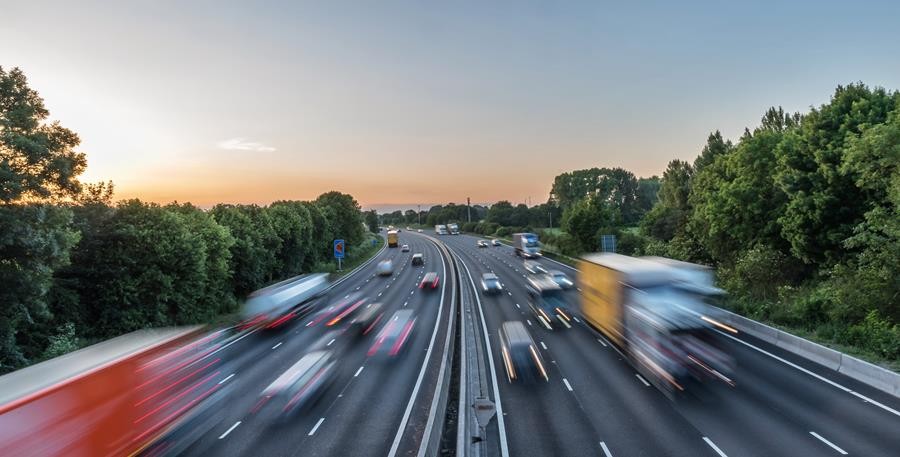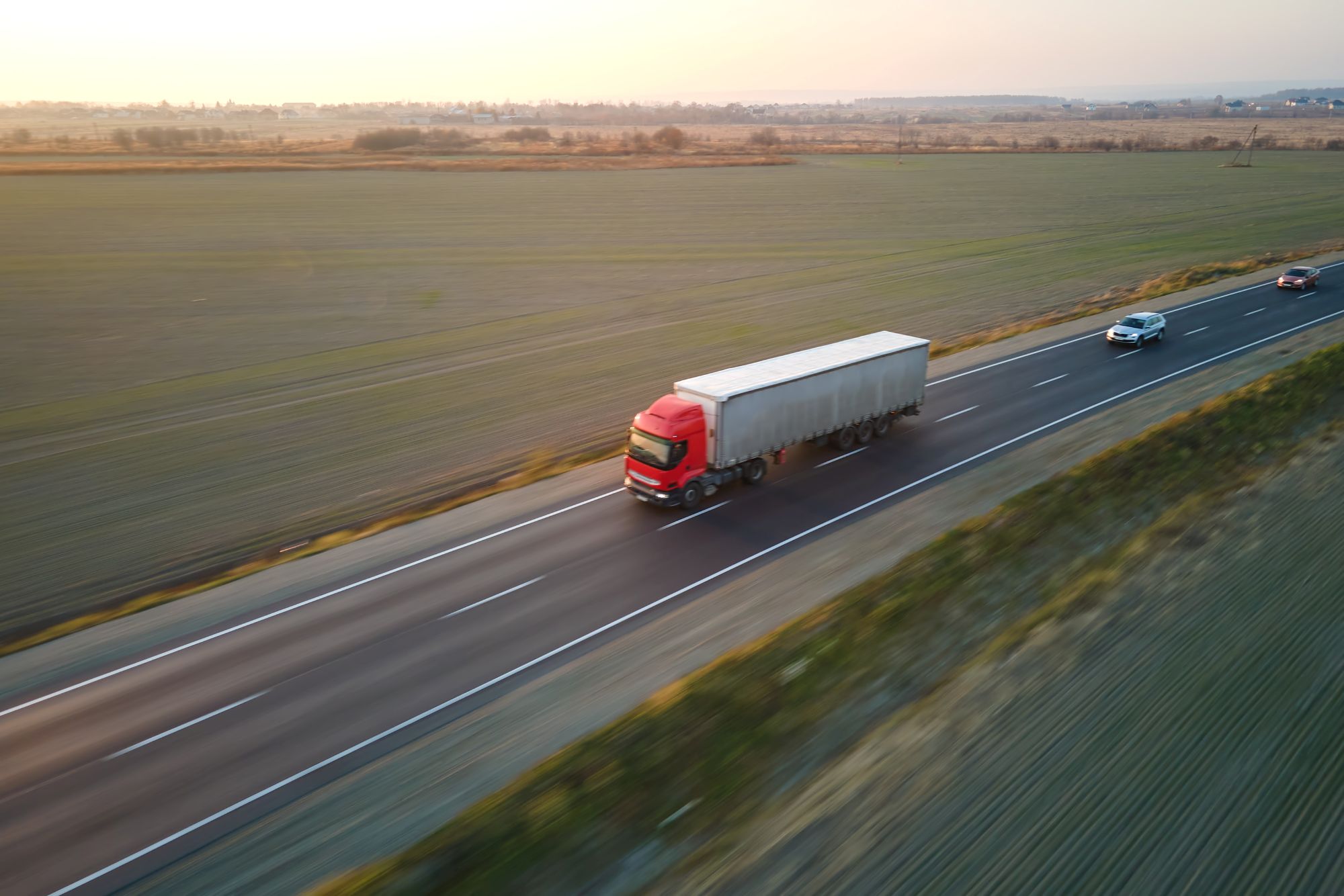
Susie Jones
Pot do trajnosti: Izziv evropskih emisij v prometnem sektorju
Ustvarjeno: 08. 08. 2024
•
Posodobljeno: 08. 08. 2024
Poročilo Clean Technica za leto 2024 je pokazalo, da več kot 25 % emisij iz cestnega prometa v Evropi prihaja iz prometnega sektorja, pri čemer so težka vozila odgovorna za 85 % emisij (preostanek predstavljajo avtobusi).
S sedanjim tempom bo leta 2030 samo prometni sektor predstavljal skoraj polovico evropskih emisij toplogrednih plinov - od leta 1990 so se emisije iz prometa v Evropi še naprej povečevale za več kot četrtino. Emisije v celotnem gospodarstvu so se zmanjšale, vendar se prometni sektor od leta 2007, ko je dosegel najvišjo vrednost, razogljičuje več kot trikrat počasnejer kot preostalo gospodarstvo.
Kaj je vzrok za naraščajoče emisije CO2 v tovornem prometu?
Odkar se je razširilo elektronsko poslovanje in storitve dostave na dom, se je znatno povečalo povpraševanje po več tovornjakih na cestah. Posledično se je zaradi povečanega povpraševanja povečalo število emisij CO2 v tovornem prometu.
Poročilo Clean Technica o tonaži domačega tovornega prometa po različnih vrstah prevoza (cestni, železniški in vodni) je pokazalo, da je v primerjavi z drugimi geografskimi območji (ZDA in Indija) cestni tovorni promet v Evropi prevladoval nad železniškim in vodnim. Čeprav je Kitajska bolj odvisna od cestnega tovornega prometa, je poročilo razkrilo, da država za dostavo blaga uporablja približno 600 000 električnih tovornjakov.

Kateri načrti za zmanjšanje emisij CO2 so v veljavi v Evropi?
Evropski parlament je sprejel Evropski zakon o podnebju za reševanje naraščajočih emisij CO2. V okviru tega zakona je bil cilj EU, da do leta 2030 zmanjša neto emisije toplogrednih plinov, povečan na vsaj 55 %, s čimer je podnebna nevtralnost do leta 2050 postala pravno zavezujoča.
Maja 2024 so države EU sprejele zakon o zmanjšanju emisij CO2 tovornjakov. Novi zakon bo zahteval, da bodo nova težka vozila, ki se bodo od leta 2040 prodajala v EU, brez emisij, hkrati pa bo uveljavil 90-odstotno zmanjšanje emisij CO2 pri novih težkih tovornih vozilih do istega leta. Proizvajalci morajo prodati veliko količino težkih tovornih vozil brez emisij CO2 - na primer električna vozila in vozila na vodikova goriva - da bi nadomestili preostalo prodajo vozil, ki povzročajo emisije CO2.
S katerimi ukrepi lahko upravljavci voznih parkov zmanjšajo emisije CO2?
Upravljavci voznega parka lahko sprejmejo ukrepe za zmanjšanje emisij CO2:
Premočno zaviranje, hitro pospeševanje in prosti tek lahko povečajo porabo goriva in emisije toplogrednih plinov - Čeprav je spremljanje vedenja voznikov lahko zahtevno, lahko tehnologija umetne inteligence voznikom in upravljavcem voznega parka zagotavlja stalne povratne informacije. Preberite več o tem, kako lahko umetna inteligenca pozitivno vpliva na trajnost v panogi tovornega prometa.
Vozni parki s starejšimi vozili lahko preidejo na hidrogenirano rastlinsko olje (HVO), vodik ali tovorna vozila na električni pogon in tako znatno zmanjšajo emisije. Vendar morajo upravljavci voznih parkov upoštevati razdaljo, ki jo lahko prevozijo vozila na alternativni pogon, in posledice za stroške.
Račun SNAP omogoča upravljavcem voznih parkov, da zmanjšajo število obvoznih kilometrov - z več kot 600 storitvenimi partnerji, ki so na voljo strankam računa SNAP, lahko upravljavci voznih parkov za svoje voznike na poti načrtujejo postanke za prenočevanje.
Ali obstaja infrastruktura za polnjenje električnih tovornih vozil?
Po študiji PwC bo do leta 2030 tretjina vseh tovornjakov v Evropi električnih. Ker se podjetja, ki se ukvarjajo z voznimi parki, odločajo za elektrifikacijo, morajo postajališča za tovornjake po Evropi zadostiti povpraševanju po električnih polnilnih postajah.
Veliko postajališč za tovornjake in bencinskih servisov bo imelo stroške z zagotavljanjem infrastrukture. Vendar so tisti, ki že imajo polnilnice za električne avtomobile, v dobrem položaju, da izkoristijo prednosti prihodnjih valov električnih tovornjakov. Do leta 2030 bo število javnih polnilnih postaj v Evropi naraslo na več kot 3 600 - EU je z uredbo o infrastrukturi za alternativna goriva (AFIR) predlagala ambiciozen zakon za polnjenje. AFIR načrtuje, da bo glavno cestno omrežje opremljeno s polnilnimi bazeni na vsakih 60 km, kar bo zagotovilo dovolj energije za polnjenje in vodikove zmogljivosti, da bo do leta 2030 9 % flot tovornjakov in avtobusov brez emisij.
Katera evropska država ima največ emisij CO2?
Leta 2021 so bile Nemčija, Francija in Italija odgovorne za največje skupne emisije toplogrednih plinov (TGP) - od 375 000 do 740 000 kiloton CO2. Vendar pa države z večjim številom prebivalcev proizvedejo več emisij toplogrednih plinov - zato pregled skupnih emisij toplogrednih plinov daje izkrivljeno sliko.
Ob nepristranskem pogledu na emisije je pogled drugačen - Luksemburg, Irska in Češka so leta 2021 proizvedli največ emisij na prebivalca v EU.
Kateri način prevoza blaga je okolju najbolj prijazen?
Prevoz blaga po železnici je eden izmed najbolj čistih načinov prevoza, vendar ima tudi druge prednosti:
Zmanjšuje zastoje na cestah, kar prispeva k izboljšanju kakovosti zraka.
Železnica omogoča hitrejši prevoz blaga in odpravlja težke prometne ovire.
Tovornjaki na alternativna goriva so še en okolju prijazen način prevoza blaga. Hidrotretirano rastlinsko olje (HVO) lahko takoj zmanjša do 90 % emisij toplogrednih plinov v primerjavi s standardnim dizelskim gorivom v celotnem življenjskem ciklu izdelka. Podjetje Certas Energy HVO stoji za prehodom na čistejšo alternativo - pomaga podjetjem pri doseganju njihovih trajnostnih ciljev in pri pomembnih korakih v smeri njihove prihodnosti brez neto emisij.



